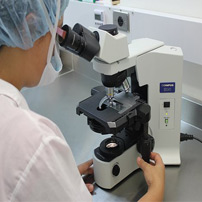 A recent study conducted by doctors at the Zhejiang Academy of Medical Sciences in Hangzhou, China found that individuals who have been exposed to asbestos and those who are facing asbestos-related illnesses including asbestosis and malignant pleural mesothelioma have higher levels of a protein known as high mobility group box 1 (HMGB1) in their blood. This is a naturally occurring protein, but the correlation between its increased levels and certain asbestos-related conditions can mean it is a useful biomarker for these conditions. Biomarkers are measurable substances within body systems that can indicate the presence of certain conditions or environmental exposure.
A recent study conducted by doctors at the Zhejiang Academy of Medical Sciences in Hangzhou, China found that individuals who have been exposed to asbestos and those who are facing asbestos-related illnesses including asbestosis and malignant pleural mesothelioma have higher levels of a protein known as high mobility group box 1 (HMGB1) in their blood. This is a naturally occurring protein, but the correlation between its increased levels and certain asbestos-related conditions can mean it is a useful biomarker for these conditions. Biomarkers are measurable substances within body systems that can indicate the presence of certain conditions or environmental exposure.
Study participants included 497 people from small industrial towns in southeastern China. This area was chosen because of its history of asbestos exposure from 1960 to 2012. The participants were divided into six groups: those exposed to asbestos for fewer than 10 years, individuals with no history of asbestos exposure, individuals exposed to asbestos in their workplaces for more than 10 years, those with pleural plaques, patients diagnosed with asbestosis, and patients diagnosed with malignant pleural mesothelioma. Workers around the world suffer from these conditions as the result of being exposed to asbestos in their workplaces. In China, up to a million people may be in this position.
HMGB1 is a cytokine. It is produced by the body’s immune system and causes inflammation. When examining the levels of HMGB1 in individuals exposed to asbestos and those who had not been, the researchers noted a distinct difference between the two groups of study participants. Different levels also separated the individuals who had merely been exposed to asbestos from those actively suffering from asbestosis and pleural mesothelioma. However, there was no notable difference on the HMGB1 levels between these two groups.
Substances definitively determined to be biomarkers for specific conditions can help doctors accurately diagnose patients with those conditions. A diagnosis requires a doctor to examine multiple facts about the patient, such as their present symptoms and their health history. Testing a patient’s blood to see which biomarkers are present can aid in the diagnosis process by providing additional evidence that the patient is infected with a specific illness or has a higher likelihood of developing that condition that individuals without the biomarker.
The presence of a biomarker such as HMGB1 can also aid in the early diagnosis of mesothelioma and other asbestos-related diseases, which lead to more optimistic prognoses for patients. Mesothelioma and others forms of cancer are easier to treat if they are caught in early stages. If further study confirms HMGB1 to be positively correlated with asbestos-related illnesses, blood testing may be a way for doctors to diagnose these conditions early, potentially saving thousands of lives.
Individuals who are suffering from mesothelioma and other asbestos-related illnesses after spending their careers working with asbestos can seek compensation for their medical expenses and other related damages through asbestos exposure claims. To learn more, contact our team of Philadelphia asbestos lawyers at Brookman, Rosenberg, Brown & Sandler today. Submit an online contact form or call us at 800-369-0899 or 215-569-4000 to schedule a free consultation in our Philadelphia office. Our qualified team works with clients in Pennsylvania and New Jersey.